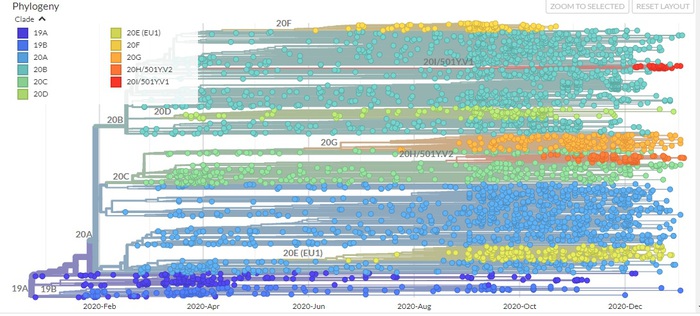At the time it was an unknown virus that had caused mysterious cases of pneumonia in the Chinese city of Whuan, but it was already clear that it should have been under special surveillance and so, under the insistent pressure of numerous Western researchers, on 11 January 2020 the China released the first sequence of what would become the SarsCoV2 virus.
Today there are more than 300,000 sequences of the virus responsible for the second pandemic of the century and, thanks to them, it has been possible to design vaccines and monitor mutations of the virus.
They are stored in large public databases, such as Gisaid and Genebank, and also analyzed thanks to projects such as Nextstrain.
Overall, more than 1,300 sequences have been obtained in Italy since the beginning of the pandemic and one of the crucial places for research in this field is the Ceinge Center for Advanced Biotechnology in Naples.
The analysis of the sequences, for example, made it possible to identify the two variants of the SarsCoV-2 virus currently most widespread in Italy: they are called 20A.EU1 and 20A.EU2, they appeared in the summer in Spain and arrived in Italy. in early autumn, probably following the reopening of the borders in the summer;
a third variant, the so-called English variant (indicated with the initials 20B / 501YD1 or B.1.1.7) is currently less widespread and, in the light of the most recent data, seems to circulate especially in Campania and Abruzzo.
More generally, the analysis of the sequences made it possible to reconstruct the evolutionary history of the SarsCoV2 virus in Italy, observes the expert in Bioinformatics of the Ceinge, Angelo Boccia.
According to the reconstruction, "the first form of the virus that appeared in our country was that of Asian origin, but it had a short life. Then the new variant 20A, which characterized the first months of the pandemic in Europe, took over, and which soon spread all over the globe ".
According to some studies, this variant of the virus has benefited from the presence of a mutation on the main weapon with which the virus attaches itself to cells, the Spike protein, capable of making the variant more transmissible.
The same variant soon gave rise to other subtypes that became widely spread.
From this point of view, Boccia continues, "the history of the virus in Italy roughly follows the European one, although it presents some peculiarities. For example, the 20C variant, which in other European countries is widely represented, in Italy seems to be practically absent".
The analyzes conducted by Ceinge also indicate that "at the moment there are about twenty cases of the English variant identified in Italy, but - points out Boccia - according to our analyzes the variant is in a phase of expansion".
The characteristic of this variant, continues Boccia, is in its "numerous mutations, present in an unexpectedly high number in the Spike protein. At the moment, however, there is still no experimental evidence on the consequences of these mutations".









/cloudfront-eu-central-1.images.arcpublishing.com/prisa/ZV3HRONFCNGOLA37LDSKYTU2VY.jpg)